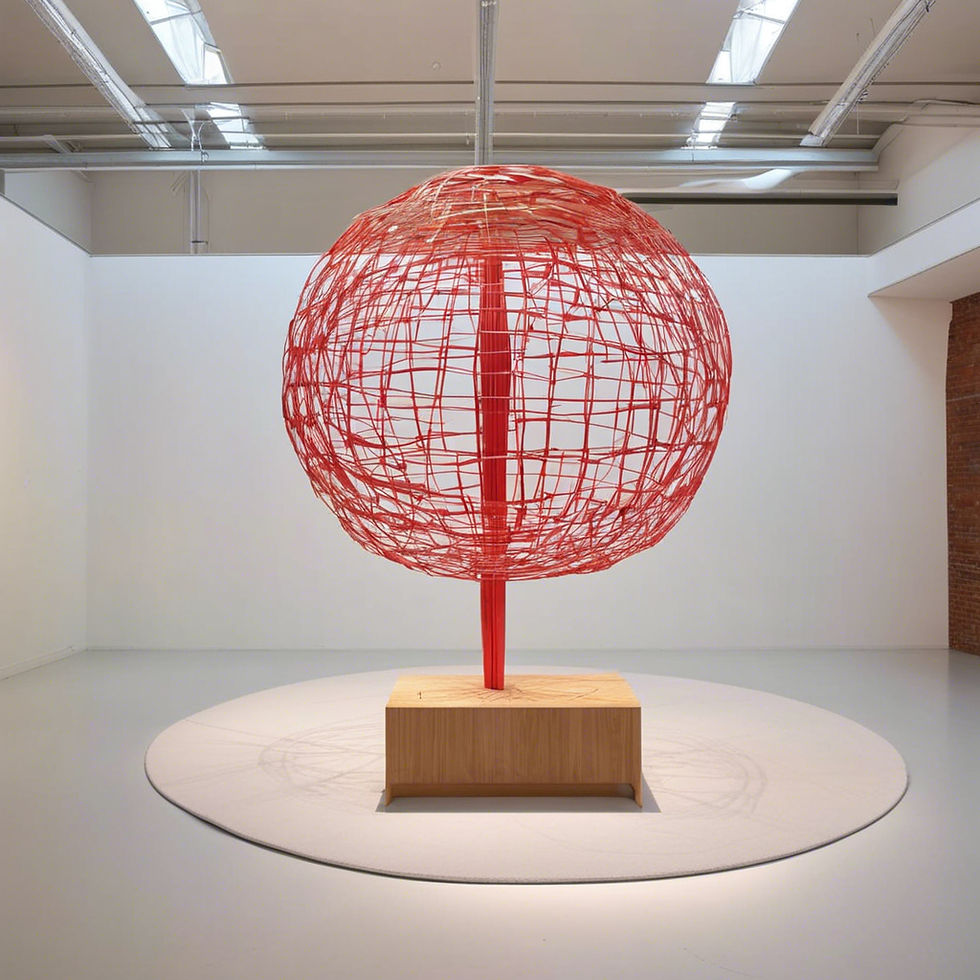The Power of Installation Art in Contemporary Exhibitions
- Ahmed Kheder
- Jun 30, 2024
- 3 min read
Updated: Sep 29, 2024
Introduction
In the ever-evolving landscape of contemporary art, installation art has emerged as a powerful medium that transforms the traditional experience of art. Unlike paintings or sculptures, installation art involves the creation of immersive environments that engage multiple senses and invite viewers to become part of the artwork. This article explores the significance, characteristics, and impact of installation art in contemporary exhibitions.
The Role of Installation Art in Contemporary Exhibitions
Historical Context
The roots of installation art can be traced back to the early 20th century with movements like Dada and Surrealism, which challenged conventional art forms and embraced the idea of art as an experience. Artists like Marcel Duchamp and Kurt Schwitters laid the groundwork for installation art by creating works that incorporated everyday objects and altered spaces. However, it was not until the 1960s and 1970s that installation art gained prominence as a distinct genre, with artists like Yayoi Kusama, Joseph Beuys, and Bruce Nauman pioneering large-scale, site-specific works.
Defining Characteristics
Installation art is characterized by several key elements that distinguish it from other art forms:
Site-Specificity: Installations are often designed for specific locations, taking into account the spatial, architectural, and environmental context. This site-specific nature means that the artwork is intrinsically linked to its surroundings, creating a unique, unrepeatable experience.
Interactivity: Many installations encourage viewer interaction, inviting audiences to move through, touch, or even alter the artwork. This interactivity breaks down the barrier between the artwork and the viewer, fostering a more personal and engaging experience.
Multi-Sensory Engagement: Installation art frequently engages multiple senses, using elements such as sound, light, and tactile materials. This multi-sensory approach creates a more immersive experience, drawing viewers into the artwork on multiple levels.
Ephemerality: Often, installations are temporary, designed to exist only for the duration of an exhibition. This transient nature can heighten the impact of the artwork, creating a sense of urgency and exclusivity.
The Impact on Contemporary Exhibitions
Transforming Spaces: Installation art has the power to transform exhibition spaces into immersive environments. By altering the physical and perceptual properties of a space, installations can transport viewers to new worlds, challenge their perceptions, and evoke a wide range of emotions. For example, Olafur Eliasson’s "The Weather Project" at Tate Modern’s Turbine Hall enveloped visitors in a simulated sun, fog, and reflections, transforming the vast industrial space into a surreal, contemplative environment.
Engaging Audiences: The interactive nature of installation art fosters deeper engagement with viewers. By inviting participation, installations can create a sense of agency and involvement, encouraging viewers to explore, discover, and reflect. This active engagement contrasts with the passive observation often associated with traditional art forms, making installations particularly effective in capturing the interest of diverse audiences.
Addressing Contemporary Issues: Installation art provides a powerful platform for addressing contemporary social, political, and environmental issues. Through the creation of immersive, thought-provoking environments, artists can raise awareness, provoke discussion, and inspire action. Ai Weiwei’s "Sunflower Seeds" installation, featuring millions of hand-painted porcelain seeds, commented on mass production, consumerism, and individualism, sparking conversations about the role of the individual in society.
Challenging Conventional Art Forms: Installation art challenges traditional notions of what art can be, expanding the boundaries of creativity and expression. By incorporating diverse materials, technologies, and methodologies, installation artists push the limits of artistic practice, inspiring innovation and experimentation in the broader art world.
Creating Unique Experiences: The ephemeral and site-specific nature of installation art means that each exhibition offers a unique, unrepeatable experience. This exclusivity can attract audiences seeking novel, memorable encounters with art. The temporary nature of installations also encourages return visits, as viewers are drawn to new and ever-changing experiences.

Conclusion
Installation art has become a defining feature of contemporary exhibitions, offering transformative, engaging, and thought-provoking experiences that resonate with diverse audiences. By challenging conventional art forms and addressing pressing contemporary issues, installation art continues to shape the landscape of modern art, pushing the boundaries of what is possible in the realm of creative expression. As artists and curators continue to explore the potential of this dynamic medium, installation art will undoubtedly remain a powerful force in the world of contemporary exhibitions.
Comments